Rice, rice baby. Don’t sleep on this side because you think it’s a passing fad. Cauliflower Rice is incredibly healthy, versatile and flexible, and did we mention it’s totally delish? Making it, cooking it, and perfecting it isn’t nearly as daunting as you think it is, so we’re here to give you the tips you need to rice up your life like a pro.
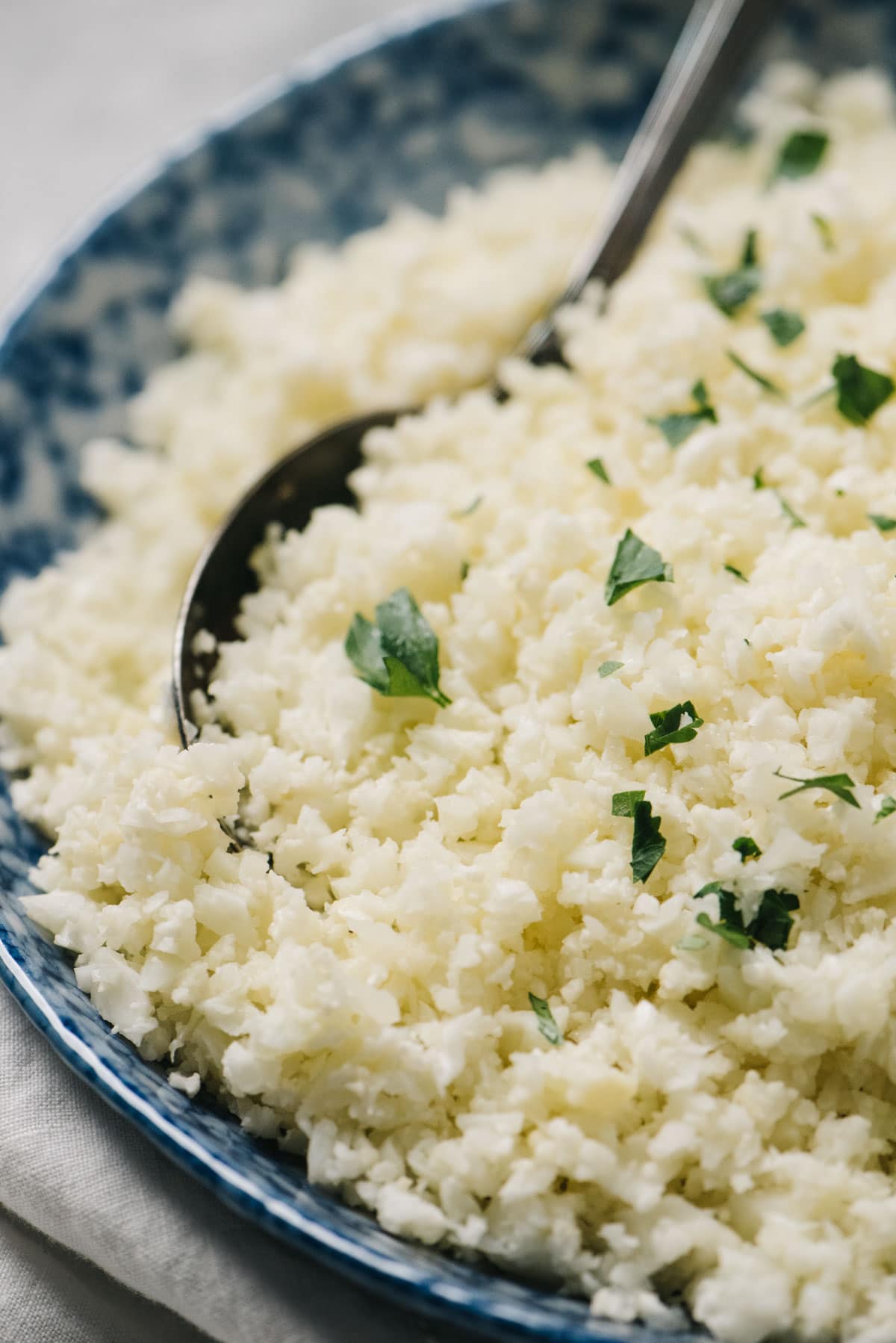
Jump to:
- Why Make Cauliflower Rice
- How to Rice Cauliflower
- Wring It!
- Tips for Ricing Cauliflower
- How to Cook Cauliflower Rice (from Fresh)
- How to Cook Frozen Cauliflower Rice
- Fresh vs Frozen Cauliflower Rice
- Tips for Cooking Cauliflower Rice
- Storing Cauliflower Rice
- Seasoned Cauliflower Rice Recipes
- More Cauliflower Rice Recipes
- Recipe
You know you’ve made it to the big leagues when Chipotle is now charging 2 bucks for a little baby scoop of you in a burrito bowl. (Even their beloved guac is only like, 50 cents more.) I might not call cauliflower rice “ubiquitous” yet, but it’s “pervasive” as heck.
Even still, there are two types of people in the world: those who hate cauliflower, and everyone else who falls somewhere on the enjoyment spectrum. If you’re not wrinkled-nose, gag-in-throat certain you don’t like cauliflower, then you probably like cauliflower.
The good news here is that as malleable as we’ve seen cauliflower become over the recent years, there’s a version of it that most people can enjoy.
So, after today, no more references to cauliflower being weird or stinky or “alternative” (we know what that was code for in the 90’s… *glare*) or falling back on it being good for you – because it’s GOOD in all definitions of the word. Periodt. And we shall be moving forward as such.
(But seriously, a cup of rice has over 200 calories; cauliflower rice has 25. Like… c’mon.)
Why Make Cauliflower Rice
Look, I don’t want to be “that” person, but I saw cauliflower when it was still playing in small clubs and loved it before it was cool. However, I will admit, I did not start ricing until the twenty-teens (and boy do I wish I was the genius who came up with that).
As a food blogger, it’s helpful to have tricks up my sleeve. And cauliflower rice is one of those because it li-ter-al-ly fits every diet plan – and therefore, every dish – out there: keto, paleo, Whole30, grain-free, gluten-free, vegan, vegetarian, lacto-ovo vegetarian, macrobiotic, Mediterranean, elimination, and stuff-you-can-sneak-your-kids-as-long-as-its-smothered-in-cheese.
When it comes down to brass tacks, cauliflower rice is simply healthier. One cup is only 25 calories, has only 3 grams net carbs, 10% of your daily fiber, plenty of antioxidants, and all the vitamin C you need in a day. Basically, so much less to feel bad about should you decide to drown it in General Tso’s Chicken.
How to Rice Cauliflower
I fully support making cauliflower rice from scratch. You’re guaranteed to get the freshest bite, with a texture that’s perfect for you. There are three easy, no-fail methods for ricing a head of cauliflower.
Method 1: Food Processor
- Divide a head of cauliflower into bite sized florets; smaller pieces will process more evenly.
- Place the cauliflower florets into a food processor fitted with a standard s-blade; for best results, don’t fill the bowl more than halfway full.
- Press the “pulse” feature 20-30 times, or until the florets have been processed into a fine, rice-like texture. Repeat the process in batches until the entire head has been riced.
- Wring out the cauliflower in a cotton kitchen towel to remove excess moisture.
Method 2: Box Grater
- Divide cauliflower into 6-8 large sections, depending on the size of the head – bigger pieces will be easier to grip when grating.
- Place your box grater into a large mixing bowl to collect the cauliflower.
- Use the largest holes to grate the cauliflower into a rice-like texture. Using smaller holes will yield much finer bits (closer to couscous).
- Wring out the cauliflower in a cotton kitchen towel to remove excess moisture.
Method 3: Blender
- Add florets to a blender until halfway full. Cover with water by about an inch.
- Pulse until the florets are the consistency of rice.
- Strain in a fine mesh sieve, then wring out the excess moisture using a kitchen towel.
Wring It!
This step is optional, but recommended, though sometimes I skip it myself if I’m making a seasoned rice dish. Wrap the cauliflower rice in a cotton kitchen towel, then press firmly to soak up excess moisture, which can make the cooked rice soggy.
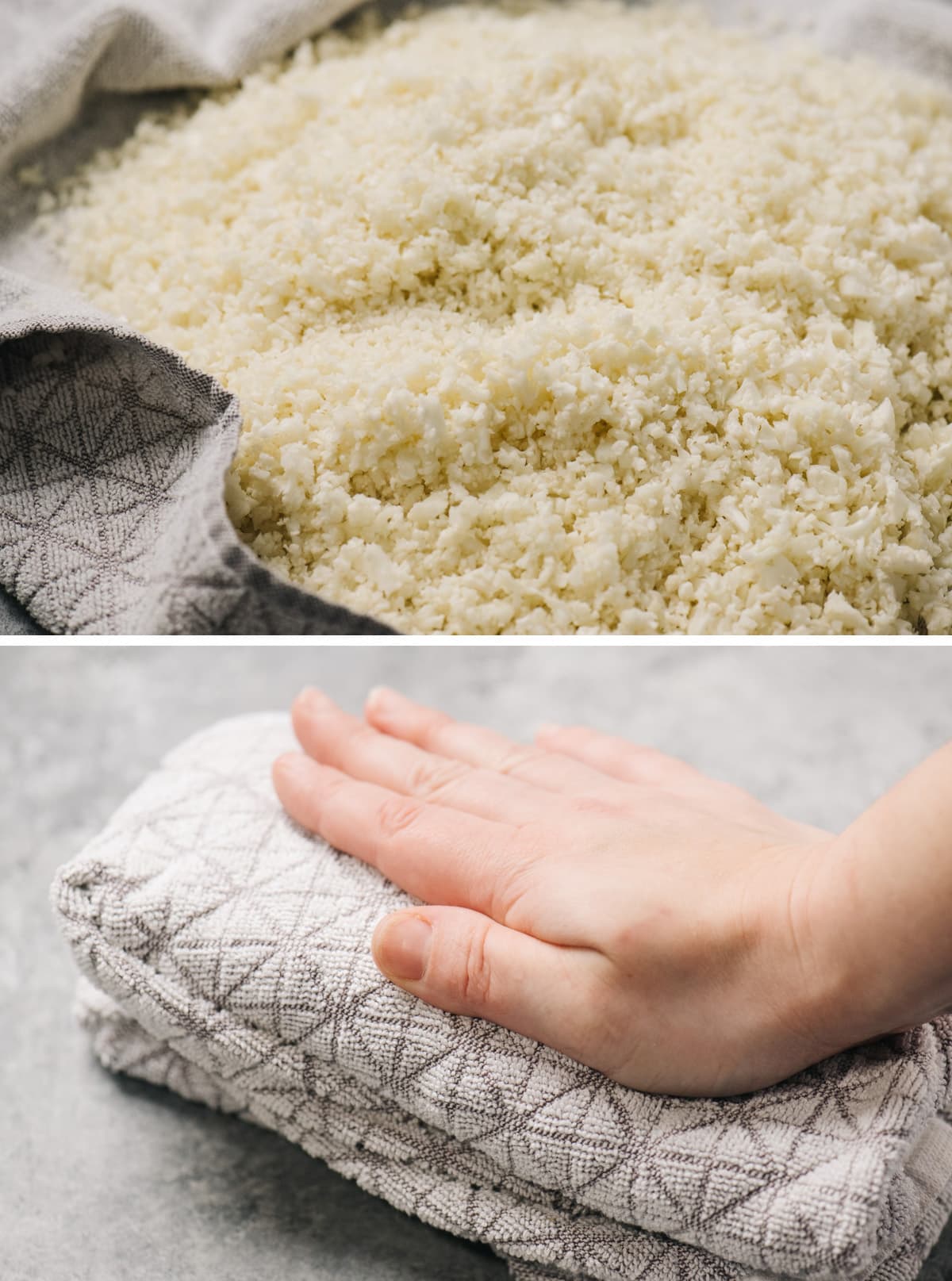
Tips for Ricing Cauliflower
- Look for the freshest head of cauliflower you can find at the store. The florets should be firm, compact, and uniformly white with no brown spots or discoloration.
- Smaller florets will rice more evenly in the food processor – slice larger pieces in half.
- Larger florets are easier to grate on a box grater.
- Don’t overfill the food processor bowl, or the florets will not rice evenly.
- Always pulse, never process.
- Scrape down the sides of the food processor once halfway to ensure you don’t miss any larger chunks.
- Wring out the cauliflower until dry – less moisture will ensure that it sautés more than it stems for a crisp texture and slightly sweet flavor.

How to Cook Cauliflower Rice (from Fresh)
Skillets out, oil up. Sautéing your cauliflower rice is the best way to achieve texture perfection. This is my preferred method for any kind of brightly seasoned rice dish or as a stand-alone side.
- Heat oil in a 12” skillet over medium high heat until it shimmers.
- Add the cauliflower rice and ½ teaspoon salt.
- Sauté, stirring frequently, until the rice is cooked, but not overly soft, 5-8 minutes.
- Taste around the five-minute mark. Be careful not to overcook. Cooked cauliflower rice should be chewy, but not soggy, with a slight bite.
How to Cook Frozen Cauliflower Rice
Super fast and super easy, for sure – especially since you don’t have to mess with (and actually want to avoid) defrosting. I like using frozen for “risotto” dishes or any recipe that calls for your rice to be smothered in sauce. Choose a good-quality brand for best results.
- Heat oil in a 12” skillet over medium high heat until it shimmers.
- Add the frozen cauliflower rice and ½ teaspoon salt.
- Saute, stirring frequently, until the rice is cooked, but not overly soft, 4-5 minutes.
- Taste around the four-minute mark. Be careful not to overcook.
Fresh vs Frozen Cauliflower Rice
Once you’ve perfected “making” cauliflower rice from scratch, it’s hard to go any other route, especially for certain dishes. But when it comes to cauliflower rice, cutting that corner isn’t necessarily something to be frowned upon.
Fully cooked, fresh cauliflower rice will be chewy, but still a bit firm with a light bite. And if you’ve got a deft hand at seasoning, it’s downright delicious. But between batch-ricing and squeezing out excess moisture – not to mention a couple extra minutes of cook time – it’s probably not a road you want to go down when you’re short on time.
On the other hand, frozen cauliflower rice requires virtually zero prep and cooks in less time too. Once cooked, the quality matches almost note-for-note except if you’re looking for a firm “al dente” bite. It almost always goes soft, but as long as you keep it quick you can absolutely avoid soggy.
Regardless of which you choose (and this is just a personal preference, but one born of experience) avoid fully steaming and avoid your microwave. Stovetop control is key to getting the best results by both sautéing and steaming.
What About Pre-Riced Fresh Cauliflower?
If you settle on the middle man, be vigilant. Avoid anything that has an even slightly greenish tint to it. This means it’s not ripe and ready-to-eat.
Furthermore, cut raw cauliflower can take on an unpleasant smell – and extra moisture – so it’s best to use bagged pre-riced cauliflower right away.
Tips for Cooking Cauliflower Rice
- Always taste for doneness.
- Wring out fresh, homemade cauliflower rice before cooking.
- Use a large skillet to help the rice both sauté and steam for best flavor and texture.
- Season throughout the cooking process – a bit of salt in the beginning will help draw out the water content.
- Use fresh cauliflower sooner than later to avoid any unpleasant odors.
Storing Cauliflower Rice
LEFTOVERS: Store cooked cauliflower rice in a sealed container in the fridge for 3-4 days. Reheat in the microwave in 30-second intervals, stirring in-between.
RAW CAULIFLOWER RICE: as mentioned above, raw, cut cauliflower can develop an unpleasant, sulfurous odor. We don’t recommend storing raw riced cauliflower for longer than 24 hours, but ideally right away.
FREEZING CAULIFLOWER RICE: however, raw riced cauliflower can be frozen! Simple rice, wring out, portion, and store. Store in a sealed, air-tight container (like gallon freezer bags) and be sure to press out all the air before freezing for up to 2 months. To cook, use the frozen cauliflower rice method.
Seasoned Cauliflower Rice Recipes
- Mexican Cauliflower Rice
- Cilantro Lime Cauliflower Rice
- Dirty Cauliflower Rice
- Coconut Cauliflower Rice
- Cauliflower Grits
More Cauliflower Rice Recipes
- Cauliflower Fried Rice
- Creamy Cauliflower Risotto
- Cauliflower Tabbouleh
- Kimchi Cauliflower Fried Rice
- Sausage and Pepper Cauliflower Rice Skillet
- Chicken and Cauliflower Rice Soup
- Greek Cauliflower Rice Salad
- Cauliflower Rice Pilaf
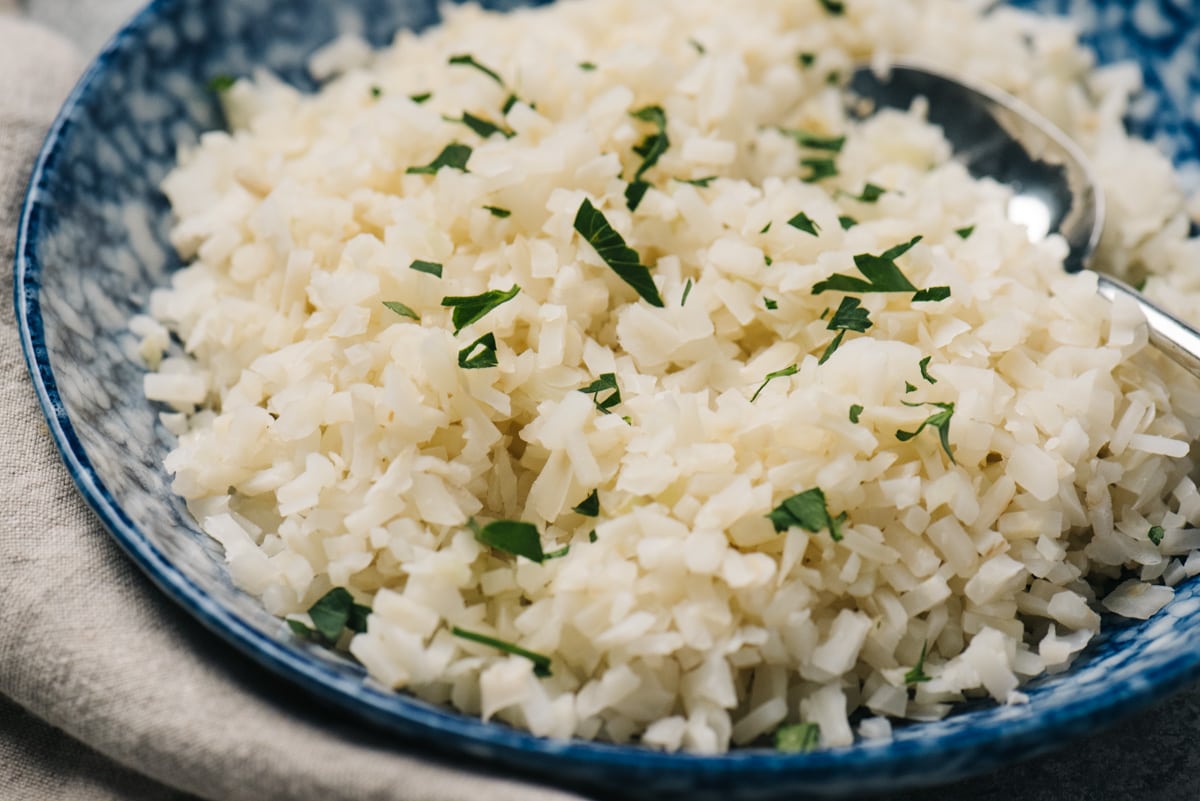

Did you make this fresh or frozen Cauliflower Rice? I’d love to know how it turned out! Leave a comment and a rating below.
While you’re at it, let’s be friends – follow me on Pinterest and Instagram for the latest and greatest.
Recipe
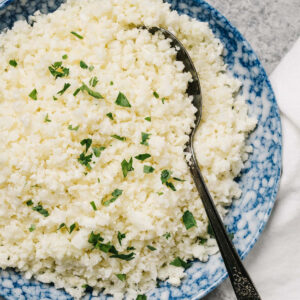
How to Cook Cauliflower Rice (Fresh or Frozen)
Print Recipe Rate this Recipe Pin RecipeRecommended Equipment
- Food Processor
- Box grater
- Blender
Ingredients
Fresh Cauliflower Rice
- 1 medium head cauliflower, about 4 cups riced
- 1 tablespoon olive oil, or avocado oil or butter
- 1 teaspoon kosher salt, divided
- ground pepper, to taste
- chopped parsley or other fresh herbs, to taste
Frozen Cauliflower Rice
- 1 16-oz bag frozen cauliflower rice
- 1 tablespoon olive oil, or avocado oil or butter
- 1 teaspoon kosher salt, divided
- ground pepper, to taste
- chopped parsley or other fresh herbs, to taste
Instructions
Fresh Cauliflower Rice
- Divide the cauliflower into bite-sized florets. Fit a food processor with the standard s-blade. Place the florets into the bowl of the food processor in batches (fill no more than halfway) then use the pulse feature to evenly rice the cauliflower, scraping the sides down halfway though if necessary; do not run the motor continuously. Remove the riced cauliflower and repeat with the remaining florets.
- Optional: wring out the cauliflower in a cotton kitchen towel to remove excess moisture (if the riced cauliflower feels "wet", you should do this – the fresher the cauliflower, the "wetter" it will be).
- Heat a 12” skillet over medium high heat. Add the oil and heat until it shimmers. Add the cauliflower rice and ½ teaspoon salt. Saute, stirring frequently, until the rice is cooked through, but not overly soft, 5-8 minutes depending on rice size. Taste around the five-minute mark – the rice will taste chewy, but firm, with a soft bite. Be careful not to overcook.
- Season the rice with more salt and pepper to taste, then add fresh herbs and toss. Serve immediately.
Frozen Cauliflower Rice
- Heat a 12” skillet over medium high heat. Add the oil and heat until it shimmers. Add the frozen cauliflower rice and ½ teaspoon salt. Saute, stirring frequently, until the rice is cooked through, but not overly soft, 4-5 minutes depending on preference for doneness. Taste around the four-minute mark – the rice will taste chewy, but firm, with a soft bite. Be careful not to overcook.
- Season the rice with more salt and pepper to taste, then add fresh herbs and toss. Serve immediately.


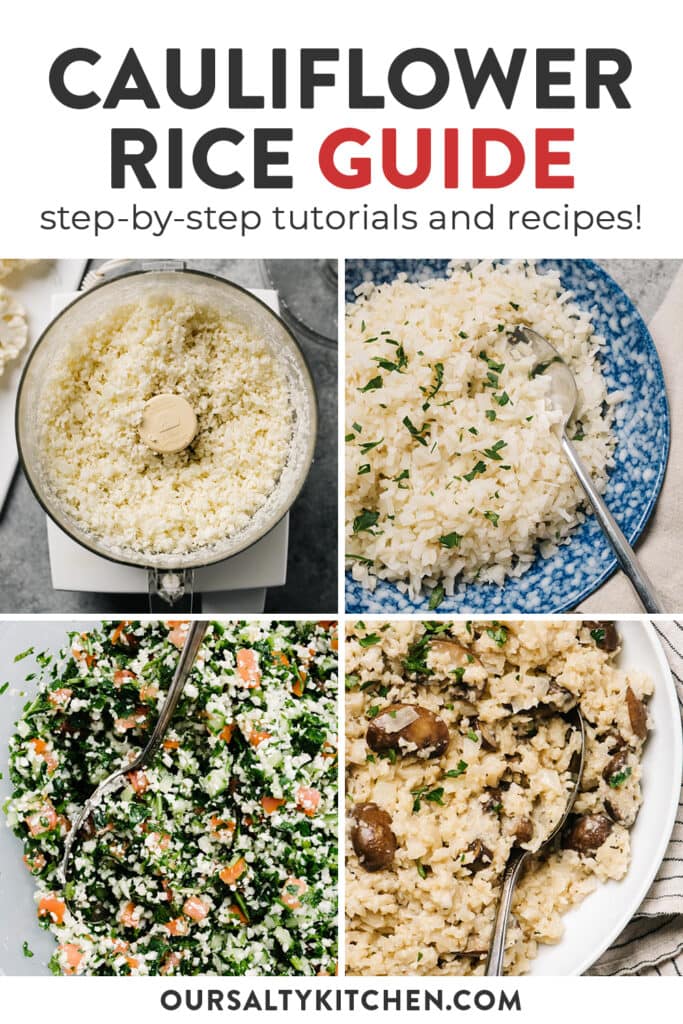
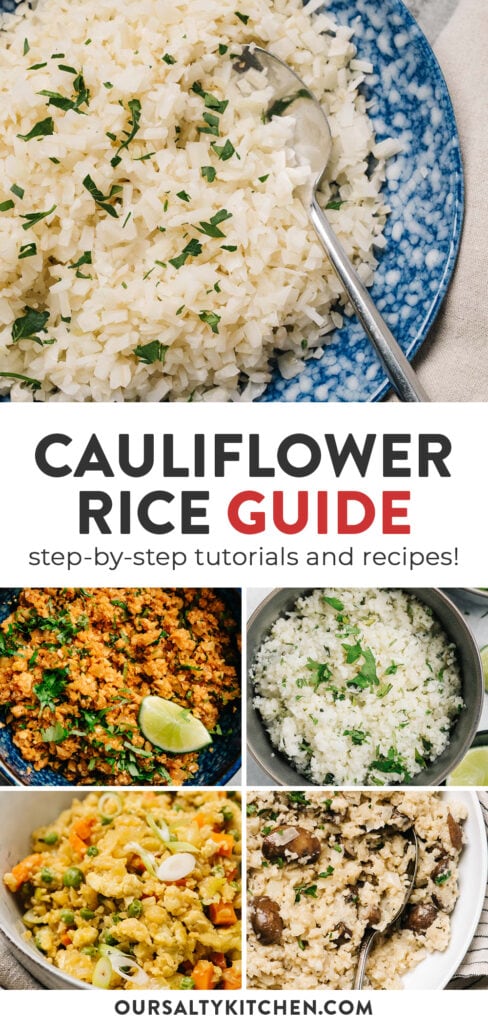
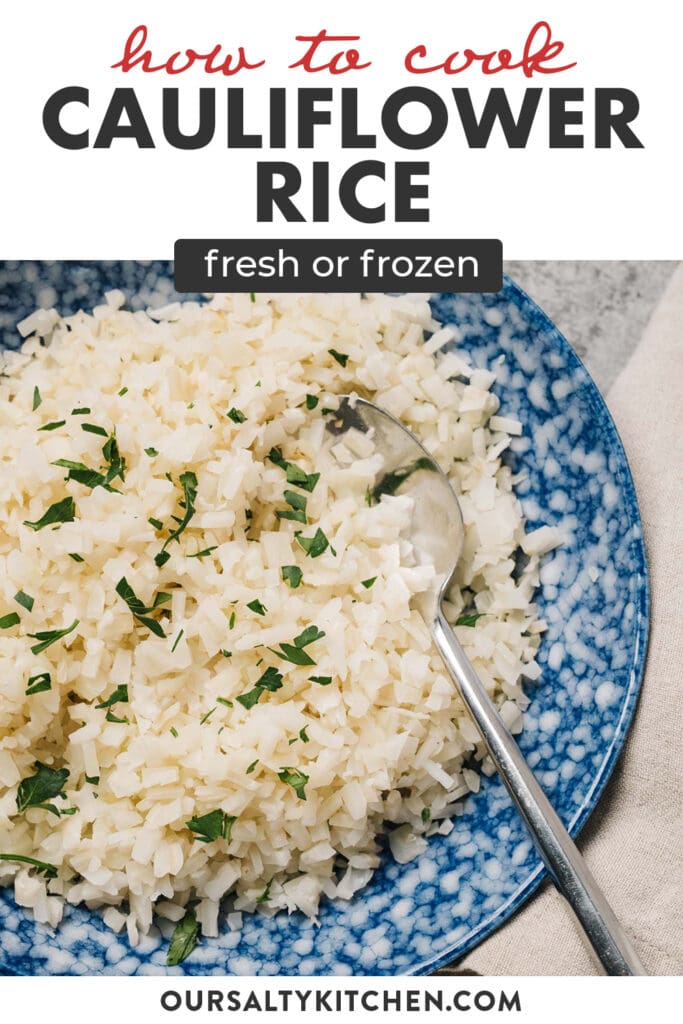

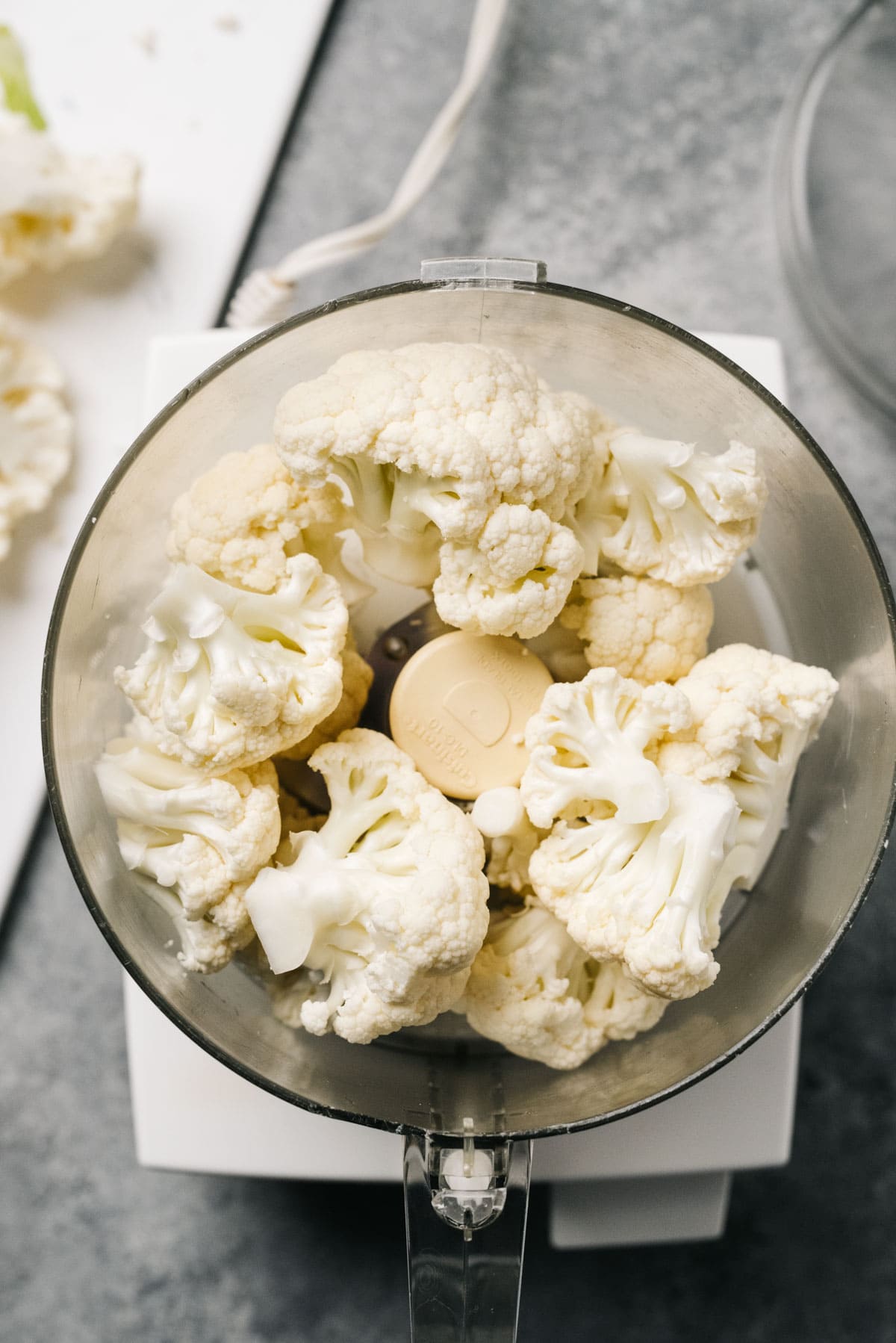
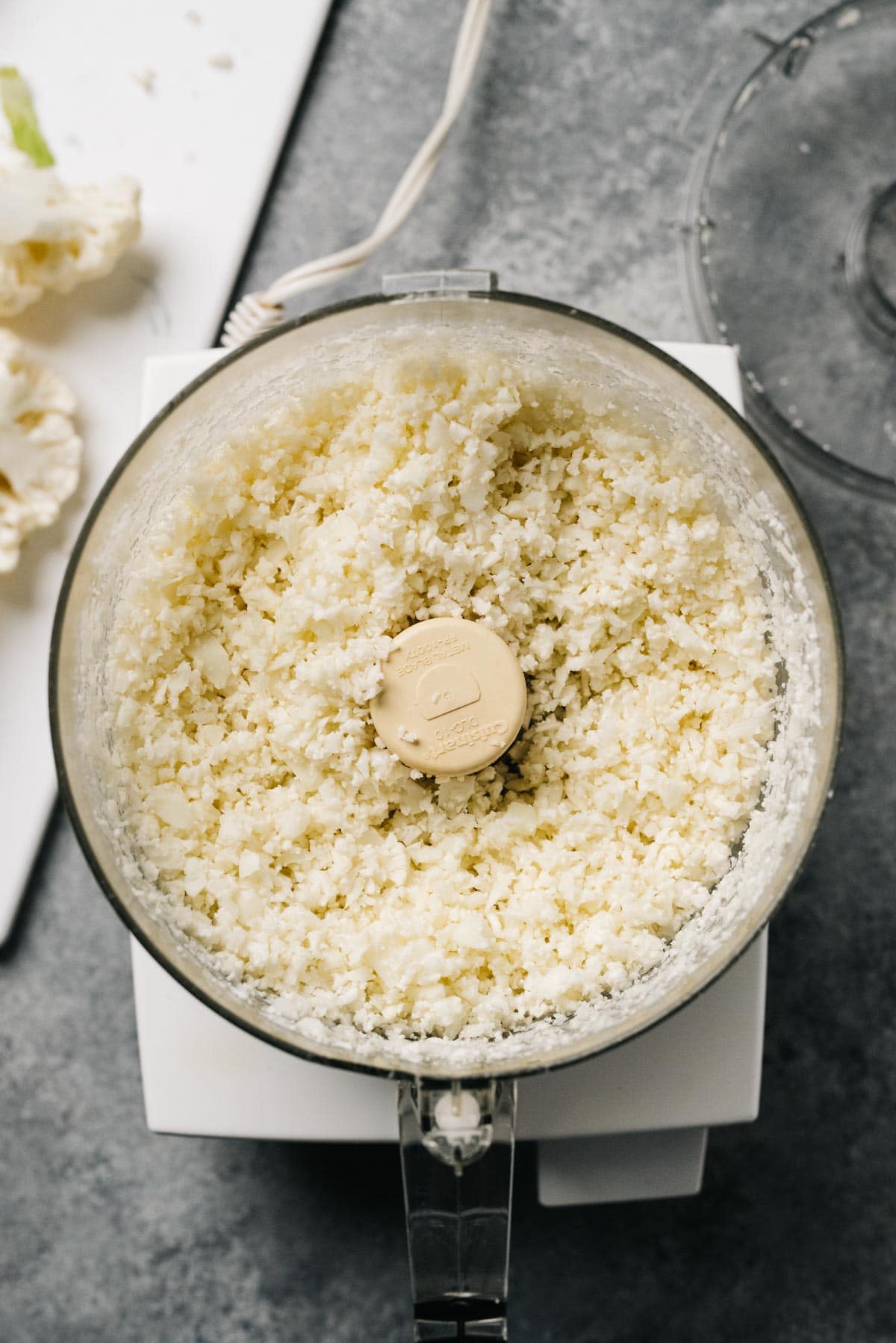
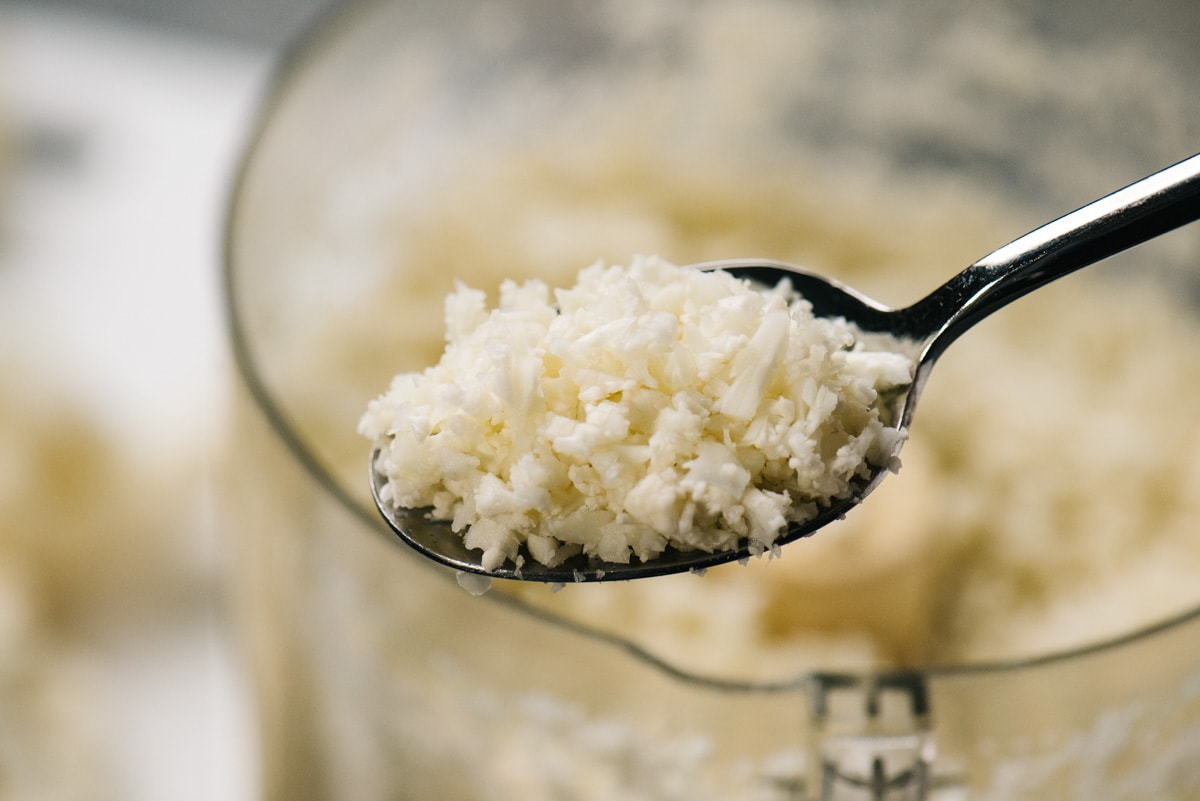
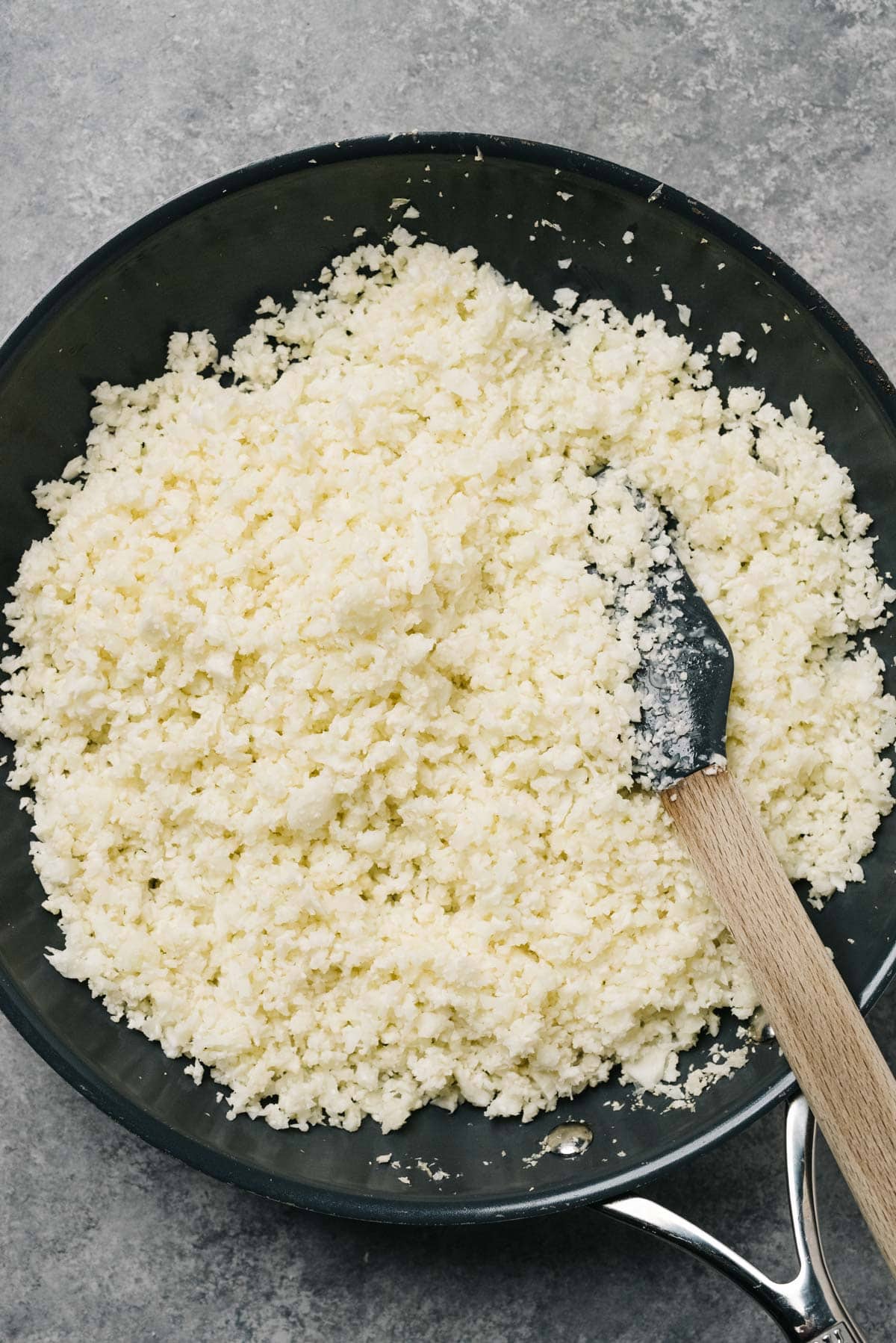

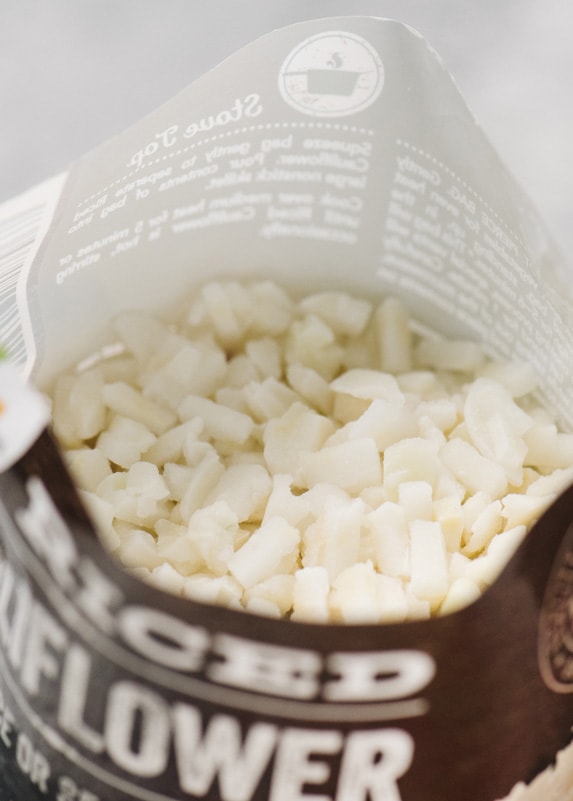
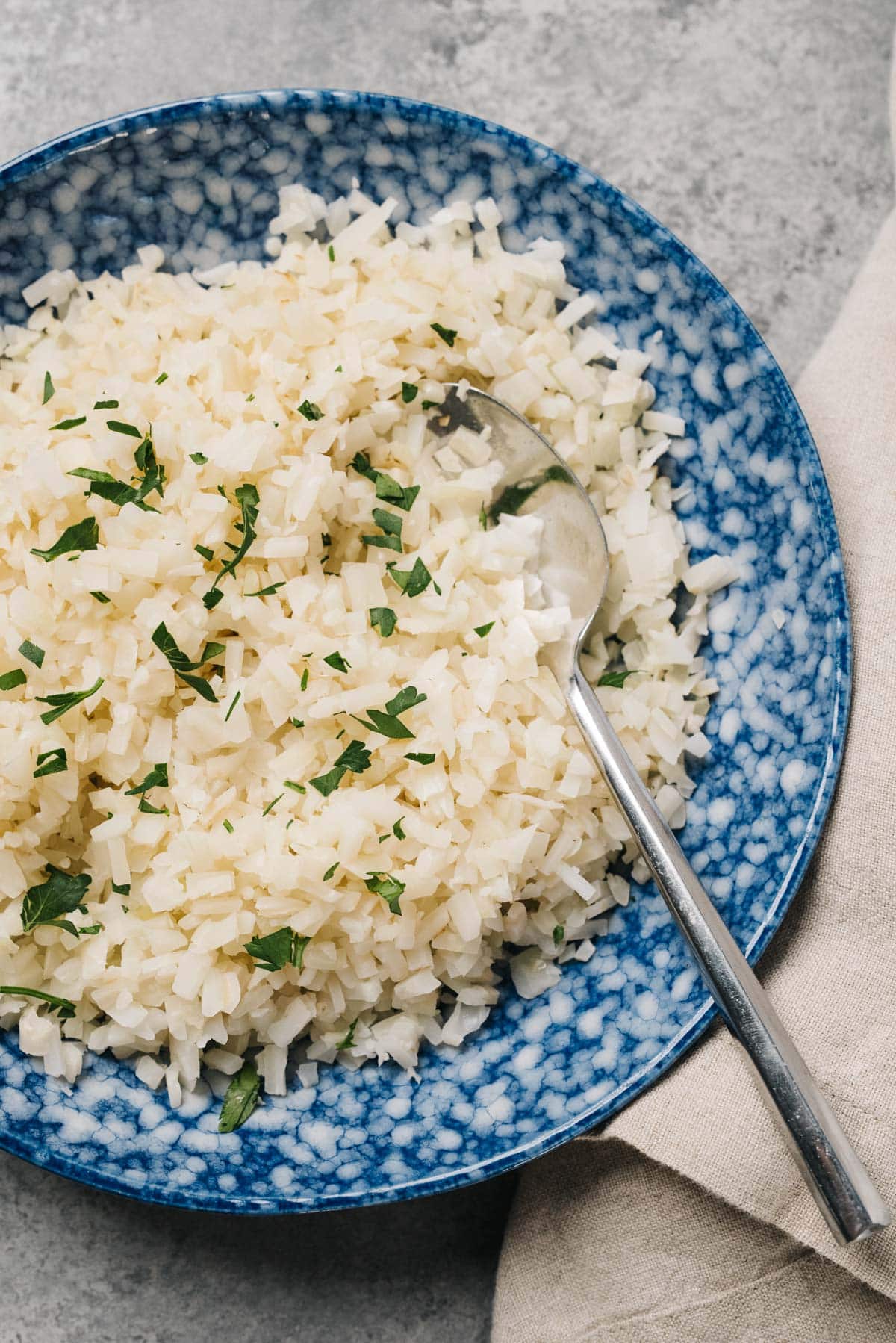

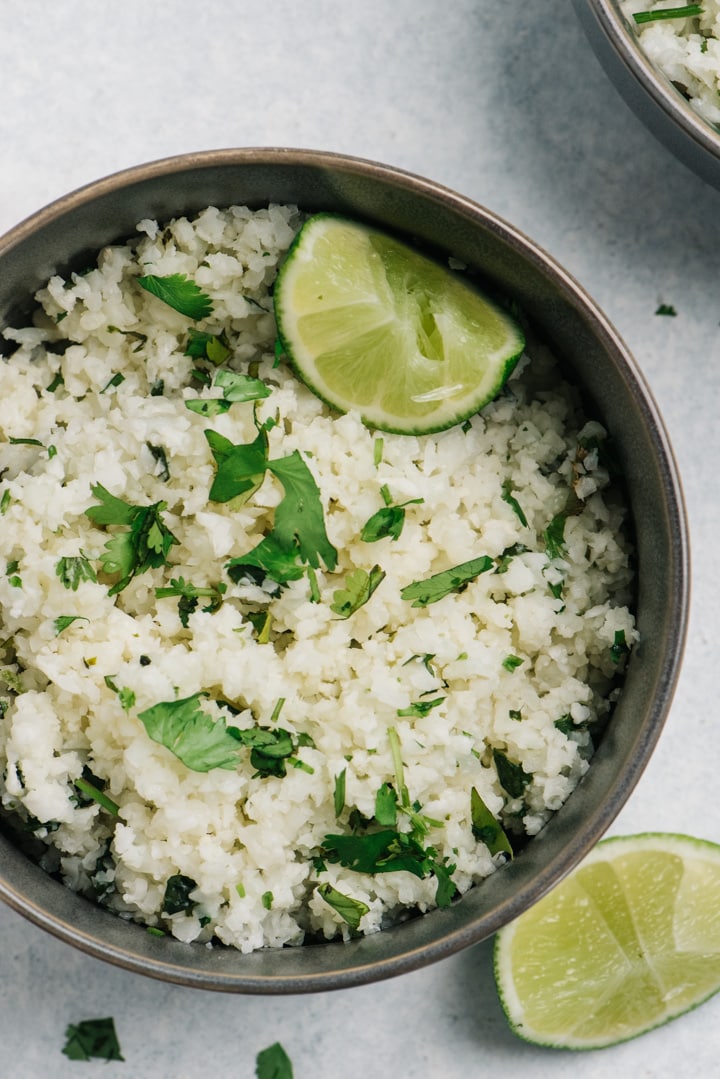
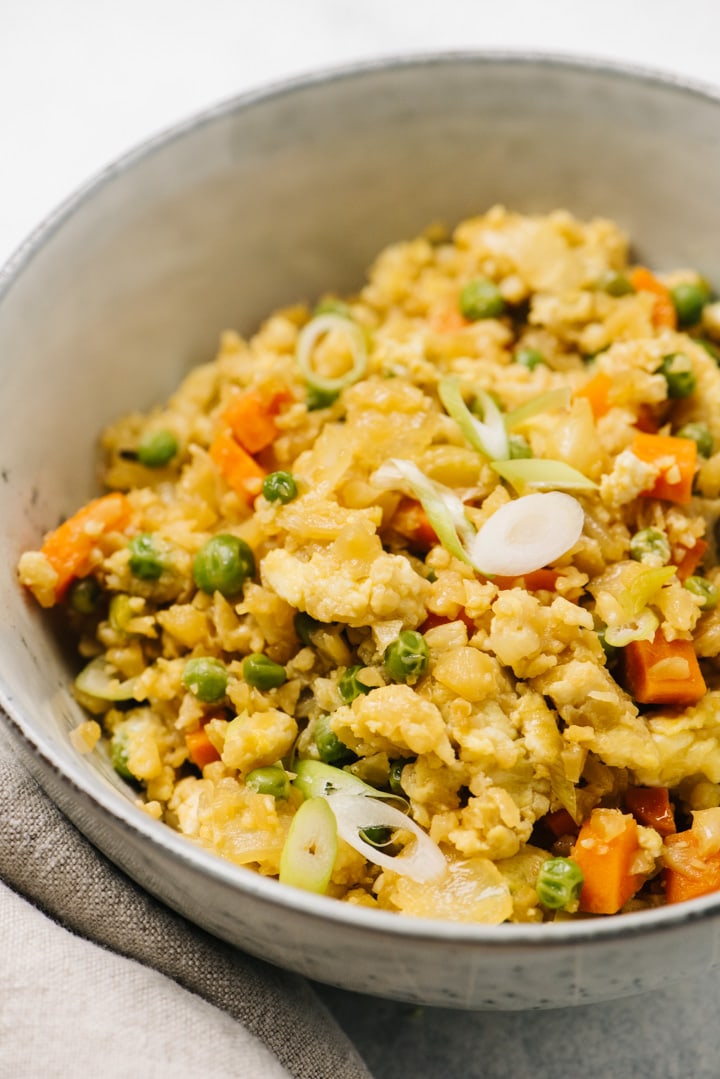
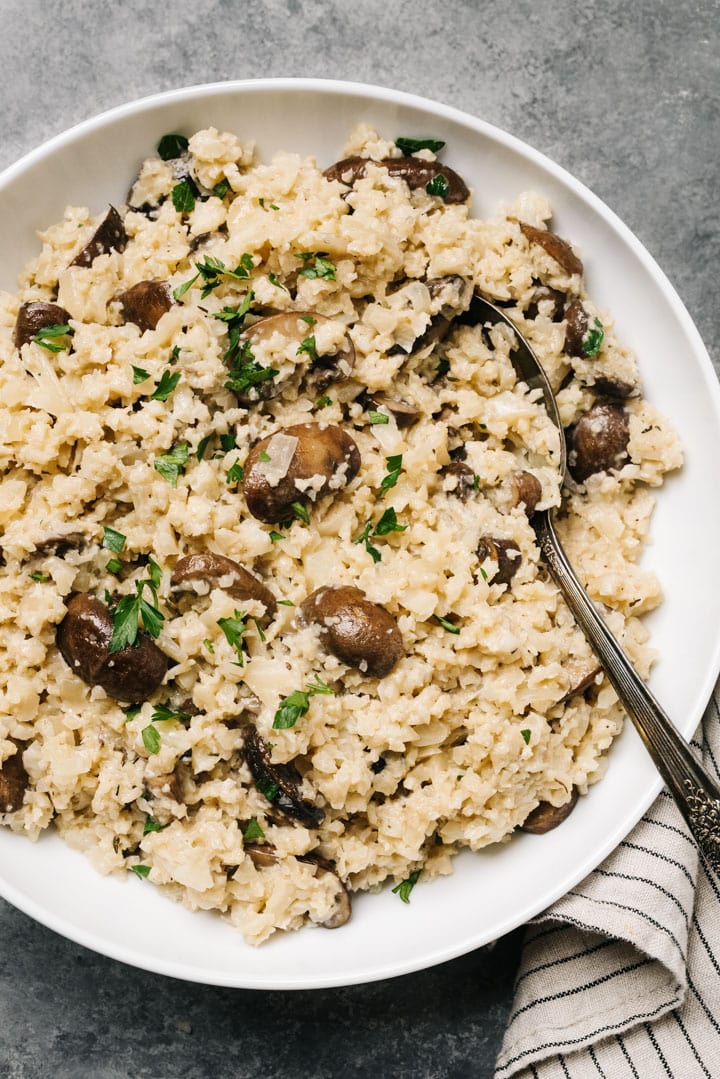
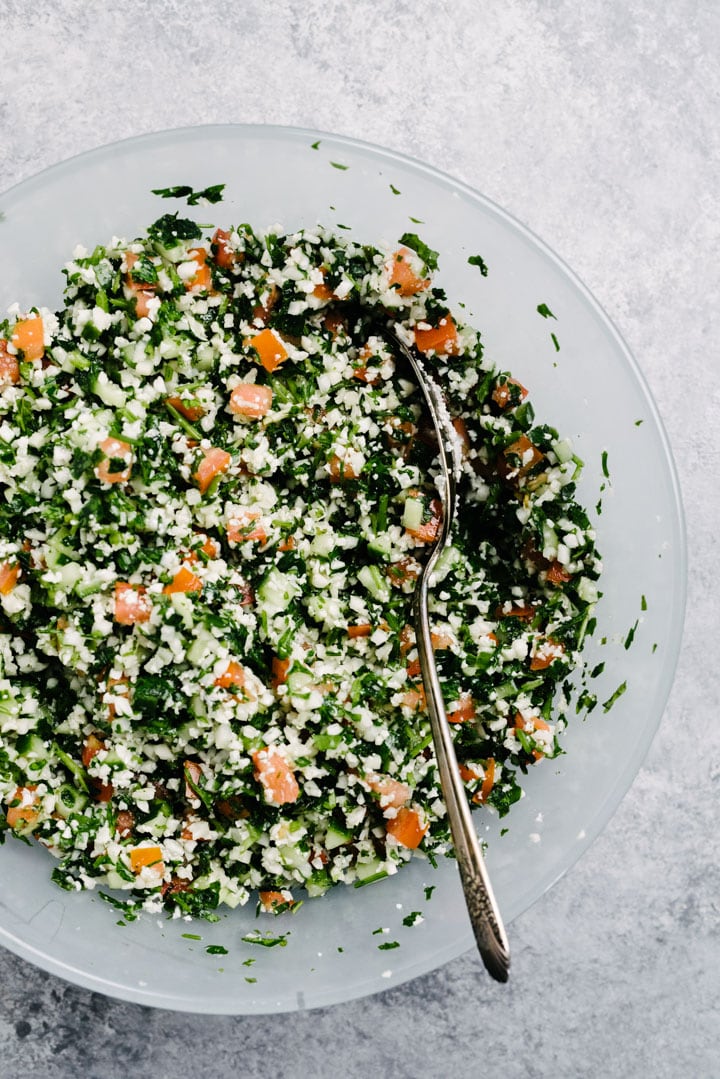
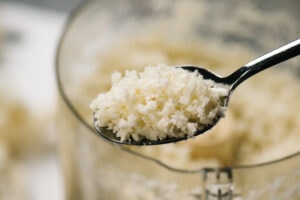
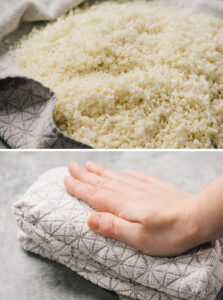
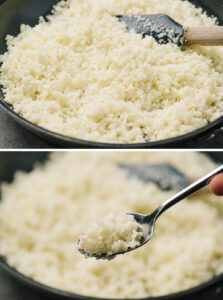
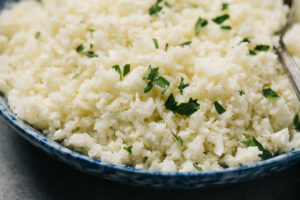

[…] Cauliflower Rice […]